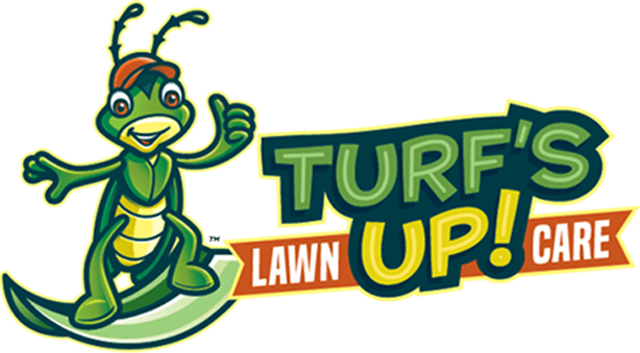Some lawn problems are fairly obvious. Like weeds that stick up. Think crabgrass. Or you see some animals munching on your grass, like deer. Those antlers are certainly something you can’t miss.
But other lawn issues are a bit trickier to identify. If your grass is brown or yellow, for example, there can be more than a few reasons for this to occur. Maybe it’s lacking water? Maybe you are overwatering? Maybe you need fertilizer? Maybe you have a lawn disease? It certainly gets complicated.
When your goal is a thick, green expanse of grass, lawn problems in Northern Virginia can be frustrating to figure out. In fact, sometimes lawn blemishes seem to appear almost overnight, and then you’re stuck wondering why it went from looking great to looking like a mess.
We know this sounds frustrating. But, remember, you’re not alone. Lawn care is more complicated than you think. This is why there are a slew of professionals who get training regularly on these challenges and are experienced in dealing with them.
Spots, blemishes, and other complexities in your lawn can require some research and a thorough plan to alleviate.
Let’s jump into some of the more common lawn problems you should know, their causes, and – most importantly – how you can get your lawn back to its healthy, happy self.
6 Lawn Problems To Keep Your Eyes On
Stumped at why your lawn is looking a bit thin? Frustrated by its shabby appearance or patchy areas or maybe even weird looking spots that you can’t even begin to describe?
Never fear, we’re here to help you figure out what’s going on with your lawn in the Purcellville, Waterford, or Round Hill, VA area.
Here are the top 6 key issues we tend to see more frequently in local lawns and what you can do about them.
Lawn Issue #1: Grass Pulls Up Too Simply
Just like if you were to brush your hair and it pulled out onto your brush in clumps, you don’t want to go to your lawn and find it just comes right up in your hands. The experience is definitely troubling, to say the least. If it’s not rooted, how long can it last?
This lawn problem in Northern Virginia is usually the result of grubs feasting on your lawn’s roots, causing this separation.

You might be asking yourself, “What are grubs?” These white, C-shaped pests are hungry. And if they eat enough of your grass roots, there may be none left. In fact, we’ve seen some lawns roll up so easily it’s like rolling up a carpet.
The solution? Preventive grub control. You want to make sure the lawn care service provider you hire provides this type of control since it’s pretty common in Purcellville, Waterford, and Round Hill, VA. And it is well worth it because catching grubs when they are small is a lot easier and less expensive than tackling them after they are larger and have caused serious damage to your lawn.
Lawn Problem #2: Grass That is Thin
Thinning hair is troublesome, sure. It might make you think you’re getting older or just doesn’t seem as attractive to you.
A thinning lawn can bring up similar feelings. Except instead of just thinning, a lawn that has open spots can erupt with other problems like weeds or even disease. Thick, green grass isn’t only gorgeous to look at, but it defends against many major lawn issues.

Let’s look at the root of the problem: Why is your lawn thinning? There are quite a few reasons. It all begins with the soil. Most Northern Virginia grasses prefer soils that are a bit acidic. As such, a low soil pH can be preventing your lawn from growing. It can limit absorption of nutrients and your lawn will miss out on the benefits of positive treatments like fertilization.
A soil test that some companies like Turf’s Up provide for free will give us a picture of what’s happening in your soil and then we can create a plan for improvement, which can include lime treatments to help your lawn get to the right pH.
A thin lawn could also be a sign that you’re cutting your grass too short. You might be trying to emulate regional golf course lawns, but Virginia lawns can’t handle that short height. Cutting your lawn too short stresses it out, causing it to thin as time progresses.
Finally, other things that might cause the symptom of a thinning lawn are weeds, insects, or diseases. Identifying the problem can ensure your lawn care technician arrives at the right solutions to get your lawn back to its thick, vibrant self.
Lawn Blemish #3: Grassy Weed Invasion
You might be tackling every single weed as you see it emerge in your lawn. No weed is going to get past you.
But it’s almost as if when you turn your back for a moment, weeds sneak right in.
And that’s what makes weeds, well, weeds. They are a nuisance because of their aggressive ability to take over a lawn quickly, taking over healthy turf as it spreads.
Grassy weeds can be tough. The best defense is a thriving, healthy, thick lawn. When grassy weeds do get in, your lawn care service provider can offer specialized solutions using products targeted at the right weeds to enable control.
The worst grassy weeds in Northern Virginia are nutsedge and crabgrass.

We typically control nutsedge with multiple applications of a specially formulated herbicide. Crabgrass, on the other hand, spreads so quickly once it emerges in messy and ugly clumps that controlling it is best done with a preemergent herbicide. Applying this product at the precise right time is essential for the best control. Then for any crabgrass that does emerge, we use a postemergent herbicide to kill them.

Just like many other lawn issues, your lawn care program should include plans for overall lawn improvement to help prevent grassy weeds. This includes fertilization, possible lime treatments, as well as annual aeration. A lawn care professional may also give you advice in proper mowing and watering to ensure your lawn can continue improving and growing strong.
Lawn Challenge #4: Grass Loses Color
You’re seeking a healthy, green lawn in that rich emerald color. Who isn’t?
That’s why an off-green shade or yellow color is off-putting. What could possibly be making your lawn color look as if it’s fading right before your eyes?
There are quite a number of reasons your lawn could be losing its color. First, maybe you have a water shortage. This could result in that dull appearance in your grass. Watching your lawn carefully during drought and increasing watering when you can could help prevent this color fading appearance.
While a lack of water is easy to blame, especially during a drought, an excess amount of water could also cause your lawn to yellow. Excess water deprives your lawn of air, making it lose its rich, green hue. It can also make your lawn feel spongy.

If you look past watering, an inadequate soil pH range for your lawn type can also result in a lackluster lawn appearance. A soil test can show your lawn care professional your current pH, and then they can come up with ways to change your pH, pushing it to a more desirable range.
Another reason you may see lawn issues like discoloration is a mix of a different grass species was used in your lawn or even a grassy weed is running rampant through a large section. This can cause that patchy look or different shades of green to emerge.
To solve this hue issue, you’ll definitely want your lawn care service provider to identify the correct culprit since there are so many possibilities so it can be treated quickly and your lawn can return to its nice, green shade.
Lawn Issue #5: Grass that Has Patches of Discoloration
An overall lack of green is one thing, but brown patches or rings can also be a lawn problem in Northern Virginia you might have to deal with at some point.
Sometimes, brown patches or discolored rings are usually the result of a turf disease. Your lawn care professional can treat this with fungicide.

But some surface feeding insects can also cause this type of damage in Purcellville, Waterford, and Round Hill, VA. We’re talking about chinch bugs and sod webworms. They feed on the lawn and the damage shows in the grass blades that they attack. While it’s usually patches you find, a major infestation can cause large swaths of damage.
And, lastly, patchy grass can also be a result of misapplied applications of fertilizer. An excess fertilizer application, for instance, can burn your lawn – not technically burn, but the result is something like a scorching or browning.
Lawn Problem #6: Grass that Has Powdery Spots on its Blades
You might notice a bit of a powdery-looking lawn. Or you might see spots on individual lawn blades.
These types of symptoms usually are the result of a turf disease. But there are quite a few diseases that can be lawn problems in Northern Virginia. And to make things even more confusing, lawn diseases can cause other lawn problems we’ve mentioned above, such as thinning or loss of color.
Yep, you guessed it: When a lawn problem emerges, it can result in a number of symptoms. In fact, your lawn can even be struggling with more than one issue at a time. Soil health problems, improper mowing, and a lawn disease, for example, can all be happening at the same time – one egging on the other.
This is why diagnosing lawn issues can be tough, requiring a professional eye who has seen these symptoms before and knows what to look for, what strategies to weed out (no pun intended, and how to treat various problems.
Find the Right Company to Tackle Your Lawn Problems in Northern Virginia
When you see lawn issues, you want to get your lawn back to its old self again as fast as possible. The process can take time, and it can certainly be frustrating when your first attempts to tackle your suspected problem don’t work.

Let Turf’s Up help. Finding a lawn care service provider who you trust can help you solve your lawn care problems quickly and easily, without taking up all of your time and energy. You certainly don’t want an inexperienced technician to make your problem worse, costing you more money later. You want to be confident your lawn is in the best hands.
We’d love to help reduce your stress, improve your grass, and give you that worry-free lawn you’re longing to spend time enjoying.
Ready to learn why Turf’s Up could be your totally awesome choice for lawn care services in Purcellville, Waterford, and Round Hill, VA? We’re stoked to learn more about you and help you have the best lawn on the block. Get started today with a free quote. Together, we can prepare a customized plan that is perfect for you and your yard.




